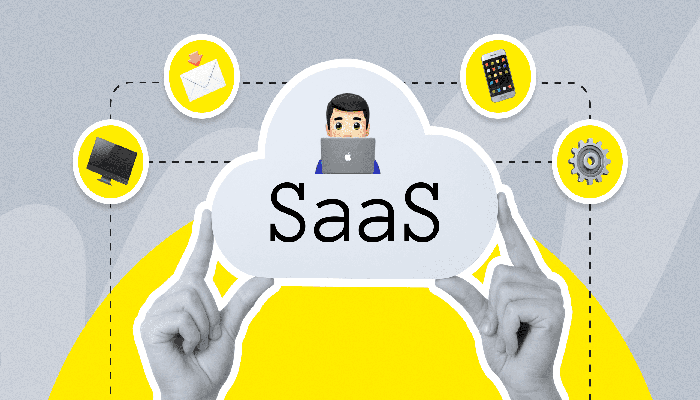In the ever-evolving world of Software as a Service (SaaS), creating products that effectively address real user problems is the key to success.
As SaaS product development advances, understanding and solving the pain points of your target audience becomes paramount.
This blog post explores the significance of building SaaS products that truly cater to user needs.
From effective SaaS product management to generating innovative product ideas, we will delve into strategies that can help you develop impactful and successful SaaS solutions.
What is a SaaS product?
Software as a Service (SaaS) products are cloud-based software solutions that are provided to users on a subscription basis. Unlike traditional software, SaaS products are not installed on individual devices but are accessed and utilized through a web browser. They are hosted and maintained by the SaaS provider, eliminating the need for users to handle installation, maintenance, and updates.
SaaS products offer a range of functionalities and cater to various business needs, such as project management, customer relationship management, human resources, and accounting. They provide users with the flexibility to access their applications and data from any device with an internet connection, promoting mobility and collaboration.
As subscription-based offerings, SaaS products typically follow a pay-as-you-go model, allowing businesses to scale their usage and costs based on their needs. This eliminates the upfront investment required for software licenses and hardware infrastructure, making SaaS products more accessible and cost-effective for businesses of all sizes.
Overall, SaaS products provide businesses with efficient, scalable, and cost-effective software solutions, enabling them to focus on their core activities while relying on the SaaS provider for reliable and up-to-date software functionality and support.
Understanding user-centric SaaS development
User-centric SaaS development revolves around gaining insight into the needs, challenges, and pain points of your target audience.
Instead of making assumptions or relying on personal preferences, this approach involves conducting comprehensive market research, user interviews, and gathering feedback to understand real user problems.
By adopting this approach, your SaaS product is designed with a clear focus on delivering value and effectively addressing specific pain points for your customers.
Effective SaaS Product Management
Effective product management is critical in building SaaS products that address real user problems.
This involves the following key steps:
1. Market research
Conduct thorough market research to identify trends, competition, and user needs. Understanding your target audience and their pain points is crucial for developing a successful SaaS product.
2. User research
Engage with your target users through surveys, interviews, and usability testing. This helps you gain deeper insights into their challenges, preferences, and expectations to inform your product decisions.
3. Roadmap planning
Create a roadmap that aligns with user needs and business goals. Prioritize features and enhancements based on their impact in solving user problems and delivering value.
4. Agile development
Adopt an agile development process to iterate quickly and incorporate user feedback. Regularly test and refine your product to ensure it continuously addresses real user problems effectively.
Generating Innovative SaaS Product Ideas:
To build SaaS products that genuinely address user problems, it is essential to generate innovative and impactful product ideas.
Here are some strategies to help you in this process:
1. Identify market gaps
Conduct thorough market research to identify areas where existing solutions fall short. Look for underserved niches or pain points that have not been effectively addressed.
2. Listen to customers
Actively listen to your target customers. Engage with them through surveys, feedback forms, and support channels to understand their challenges and pain points. Use their insights as inspiration for innovative product ideas.
3. Analyze competitors
Study your competitors’ products and identify areas where you can differentiate yourself. Look for opportunities to provide unique solutions or improve upon existing offerings.
4. Foster team collaboration
Encourage collaboration among team members. Organize brainstorming sessions, workshops, and leverage the collective knowledge and expertise within your organization to generate innovative product ideas.
5. Embrace user feedback
Continuously gather user feedback and analyze it to identify patterns and recurring issues. This feedback serves as a valuable source of inspiration for new features or enhancements that address user problems.
6. Stay abreast of Industry Trends
Keep an eye on the latest industry trends, emerging technologies, and evolving user needs. This awareness can spark ideas for innovative SaaS products that solve emerging problems or leverage new opportunities.
Conclusion
Building SaaS products that effectively address real user problems forms the foundation of successful SaaS product development.
By adopting a user-centric approach, practicing effective SaaS product management, and generating innovative product ideas, you can create impactful solutions that resonate with your target audience.
By addressing genuine pain points and delivering value, your SaaS product is more likely to gain traction, foster customer loyalty, and drive business growth in the competitive SaaS landscape.
Remember, success lies in understanding, empathizing, and solving the real problems your users face.
